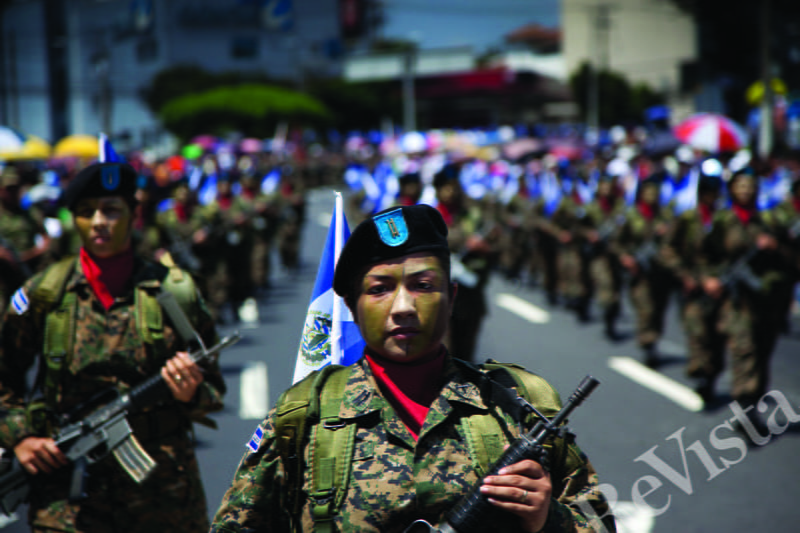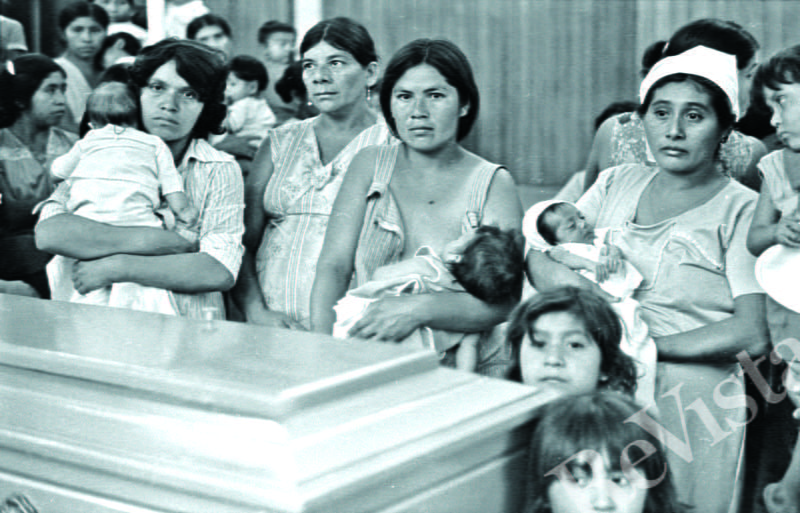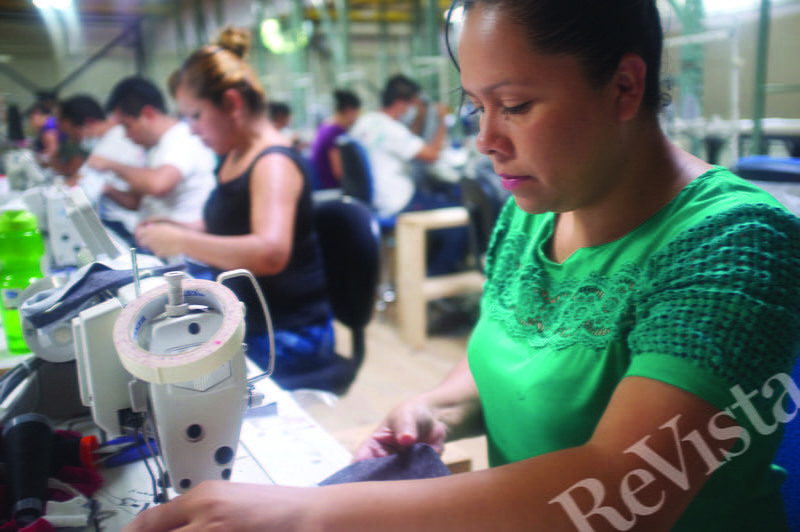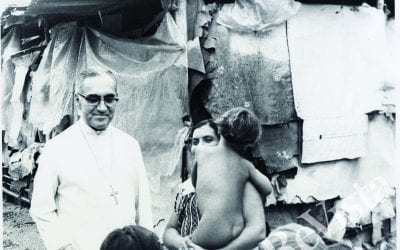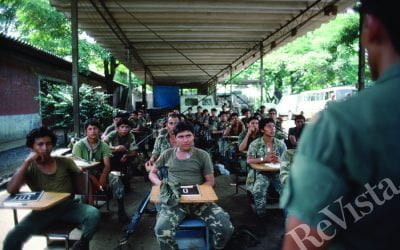The Convulsions of War
El Salvador (1980-2015) and the U.S. Civil War
The impact of the 1980-1992 war in El Salvador is as profound as the Civil War’s impact on the United States.
Despite the current immigration debate and the dominant role of the United States during, and for several years after, the war, the convulsive and long-lasting impact of the Salvadoran conflict is largely overlooked in the United States.
The war in El Salvador used to be front-page news in the United States, seen in a post-Vietnam Cold War media frame with a Washington foreign policy focus. Since 1992, with a few news “blips” during presidential elections, El Salvador has been invisible, and to U.S. millennials, its devastating war is not even an historical speck.
By contrast, the U.S. Civil War, a century and a half later, remains a vivid presence in the United States. Witness the Confederate flag controversy that followed the hate crime murders of nine African Americans in their Charleston, South Carolina church. PBS has launched a dramatic series on the Civil War. It would be beneficial for the U.S. public, amidst the Trumped-up immigration debate, to know the impact of the U.S.-financed war on El Salvador.
THE DEAD
In This Republic of Suffering: Death and the American Civil War, Drew Faust traces the efforts for decades after the war to count the dead. The count is imprecise because of battle commanders’ inevitably poor records and the nature of destruction of the war itself. There was so much killing that the social fabric, North and South, was badly torn. Her estimate of estimates concludes that roughly two percent of the nation’s inhabitants died as a direct result of the war.
Wartime killing in El Salvador was almost as great—about 1.5 percent of the population. The United Nations estimated 75,000 killed, almost fifty percent higher than U.S. deaths in Vietnam. In rural areas and among the poor, everyone knew somebody who had been killed. However, the killing in El Salvador had a very different quality. Rather than soldiers killed in large-scale Civil War battles, in El Salvador, 88 percent of the Salvadoran losses were civilians, according to the U.N. Peace Commission. Thousands of political assassinations in the early years, particularly in San Salvador, were followed by the decimation of many rural areas, mostly not by bombardment.
POST-WAR TRANSITIONAL JUSTICE AND POLARIZATION
In late 1865, the Confederate commander of the notorious Andersonville prison, Captain William Wirz, after an extensive trial with 140 witnesses (including many from the Confederate side) was found guilty of war crimes and hanged. Some 13,000 prisoners died in Andersonville, more than in any one Civil War battle.The trial and Wirz remained controversial for many decades; in 1909 a statue of him was erected in Andersonville.
Neither Confederate General Nathan Bedford, nor the more famous General George Pickett (“Pickett’s Charge” at Gettysburg) was tried. Following a battle victory Bedford’s troups slaughtered some three hundred black Union troops and a dozen of their white officers. Apparently, that was not considered a war crime. Bedford became an early leader in the Klu Klux Klan. Several statues of him exist, including one in Selma, Alabama. Pickett, a graduate of West Point and former U.S. Army officer, fled to Canada after Appomattox because he feared he would be prosecuted and possibly executed as a traitor. But in 1866 President Andrew Johnson halted military tribunals, and Pickett returned. In 1874 his West Point classmate, President Ulysses S. Grant, granted him complete amnesty. (Pickett was first decorated during the Mexican-American War in the Battle of Chapultepec. In 1992 the Salvadoran peace accords were signed in Chapultepec Castle, the site of the battle.)
In the South, a brief political opening for African Americans was swiftly eclipsed by the Jim Crow laws that, among other ills, disenfranchised blacks for over a century until the Civil Rights Act of 1965. In the North, for decades during elections, Republicans from the “Party of Lincoln” regularly “waved the bloody shirt” to blame the South and Democrats for the War.
In El Salvador, a broad amnesty law, passed before the end of the war, has largely shielded from prosecution or civil trial the perpetrators and intellectual authors of even the most notorious cases of human rights abuses—the killing of the Jesuits, the assassination of Archbishop Romero, the massacre at Mozote. However, continuing legal and political actions using international law attempt to hold perpetrators accountable. Legal actions in the United States resulted in two Salvadoran generals being forced to move from their Florida residences back to El Salvador. Efforts to reunite Salvadoran orphans adopted during the war by U.S. familes with their Salvadoran relatives revealed a war-time military-run “baby traffic” operation. Even two decades after the war, some of these efforts are met with threats—a note under a lawyer’s door, a burglary in which only computers are stolen.
For several election cycles the rightist ARENA party “waved the bloody shirt” against leftist FMLN candidates, but with FMLN successes this tactic faded. In contrast to the South and Jim Crow, in post-war El Salvador, after several election cyles, the franchise has effectively been expanded in rural areas by decentralizing polling places. However, hundreds of thousands of Salvadorans in the United States face formidable barriers to vote in Salvadoran elections. And those who have U.S. citizenship face new measures in some twenty states aimed at restricting the vote of African Americans and Latin@s, a rolling back of the franchise expanding effects of the 1965 Voting Rights Act.
THE MIGRATIONS
Forty years after the start of the U.S. Civil War, the rural African-American labor force began The Great Migration from the South. Families escaped lynch mob repression and sharecropper poverty, often sneaking out of town almost as in the days of the Underground Railroad, as chronicled in Isabel Wilkerson’s The Warmth of Other Suns. By the beginning of the Depression 1.5 million had fled, followed by 1.4 million from 1940 to 1950. In 1910 blacks were 40 to 57 percent of the populations of six “Black Belt” states; by 1970, only Mississippi had more than thirty percent black population.
Proportionally, El Salvador’s migration has been greater and faster. During the war, more than one million persons, in a country of just over five million, were driven from their homes in an effort to “drain the sea” from the FMLN guerrillas. The government press-ganged men into the military. Escape to the United States was less dangerous and might provide income for their war-impoverished families. Seeking to portray El Salvador in a positive light, the Reagan administration tried to block Salvadoran immigrants—only three percent of applicants were approved (compared to 60 percent of Iranians). But Salvadorans continued to make their way through Guatemala and Mexico. In 1980 only 354,000 Central American immigrants were in the United States. By 2013 there were 3.2 million, including 1.3 million Salvadorans.
After the 1992 Peace Accords, wartime violence was quickly replaced by criminal violence that was at least initially related to the war. The profusion of available assault rifles, rapid demobilization, job shortages, and rampant if undiagnosed Post Traumatic Stress Order (PTSD) all contributed to violence that still feeds the flow of immigrants. Gangs, armed with guns smuggled from the United States have fought for advantage in the drug trade that feeds a demanding U.S. market.
TRANSFORMATION OF THE ECONOMY
The social and economic impact of the U.S. Civil War, for the victors and the vanquished, was profound. The North, bolstered by wartime production, completion of the transcontinental railroad and the Homestead and Land Grant Acts after 1865, plunged into the most rapid period of economic industrial expansion ever seen (until post-1985 China), with robber barons exploiting a labor force prohibited from unionizing.
By 1866 the South’s agro-export economy lay in ruins and slave holders lost their “capital.” But the South remained an agro-export economy, with less-than-free sharecroppers as its labor force. By 1880, cotton exports exceeded those of 1860. Even as late as the 1930s, only one in five sharecroppers showed any profit ($30 to $150 for a year’s work).
Unlike the U.S. South, the traditional Salvadoran agro-export economy—also dominated by a few families and with a less-than-free labor force—was eclipsed within ten years of the Peace Accords. For more than a century, the coffee elite had dominated the economy. Sugar, cotton and cattle became significant export crops after World War II. Beginning in the 19th century, small peasants on fertile land had been dispossessed through a series of land laws. Vagrancy laws and debt peonage then provided a low-paid work force to the then new coffee elite.
Three generations later, increasing landlessness and insufficient growth in urban jobs were partially relieved in the 1960s by migration to Honduras, a process that was abruptly reversed by the 1969 “soccer war” with Honduras. More landlessness and an increasingly repressive military dictatorship were the chief causes of the war that broke out in 1980.
The 1992 peace accords only minimally addressed the issues of poverty and inequality, and by 1995 the public’s estimation of the success of the accords had dropped dramatically. So, amidst postwar violence, migration to the United States continued.
But the war and its aftermath radically eroded the agro-export economy and replaced it with “nontraditional” exports and the growth of financial capital, as detailed in Alexander Segovia’s Transformación estructural y reforma económica en El Salvador.
The United States in 1980 sponsored an agrarian reform (mainly for counterinsurgency purposes) that expropriated with compensation about 14 percent of arable land and 19 percent of lands devoted to export crops. (Following the U.S. Civil War, proposals for land distribution in the South—“40 acres and a mule”—were defeated.) In areas of the country where the FMLN was strong, the guerrillas charged landowners war taxes, and other owners abandoned their land, which was then farmed by landless peasants. Additionally, the United States pushed for non-traditional exports and textiles from assembly plants (maquilas). Massive U.S. wartime aid prevented the economy from going over the cliff and also gave its policy preferences outsized influence.
After the war coffee prices hit low points, particularly after Vietnam suddenly became a major producer. Traditional agro-export major players, many of them paid off through the agrarian reform, shifted their assets into non-traditional areas.
In the five years prior to the war traditional agro-exports were 65% of exports with coffee at 50%. From 1990 to 1994 traditional exports fell to 32%, and coffee to 26 percent. By 1999 these numbers fell to 13 and 10 percent. Meanwhile maquila exports grew from 5.2% of exports before the war, to 25 percent in 1990-1994, to 53 percent in 1999. The agricultural share of the labor force fell from one third to one fifth from 1990 to 1999. In 2015 apparel made up 40 percent of exports; agricultural products accounted for 15 percent.
But owners of maquilas did not emerge as the most powerful economic forces as the coffee elite had been. Rather, it was the owners of banks that were privatized when the rightist ARENA political party and President Cristiani came to power in 1989. That economic power shift included families traditionally associated with coffee (including Cristiani).
THE REMITTANCE ECONOMY
This movement to financial capital has been made possible, ironically, by the Salvadorans who fled to the United States. It is the money they have sent home, called remittances (remesas), that has most transformed the Salvadoran economy and constitutes, by far, its most potent force. As families in El Salvador spend that money it passes through the commercial sector and through the banks. (African Americans who migrated North sent money to relatives in the South, as illustrated by several anecdotes in Warmth of a Rising Sun. But I’ve not found aggregate data.)
In 1980 remittances to El Salvador were $21 million. In 1995 they amounted to 1.1 billion—50 times greater. Cumulative remittances over the 15 years amounted to $5.5 billion, almost twice the amount of U.S. aid ($2.8 billion). By 1999 U.S. aid had dropped to $5 million; remittances that year were $1.4 billion.
In 2014, following a dip during the U.S. great recession, that figure rose to $3.9 billion, or $655 per person in El Salvador. That far exceeds the per capita total of almost every other country—two to three times the typical monthly wage in El Salvador.
Per capita, Salvadorans received about 45 percent more than Hondurans and Guatemalans, and five times the relative amounts for Nicaraguans and Mexicans. The national poverty rate in El Salvador is very serious, but is far less (30 percent) than that of the aforementioned countries (42 to 64 percent), partially because of remittances.
THE SOCIAL FABRIC
It is tempting to see success in these numbers. Hard working Salvadorans, fleeing a war, rebuild the homeland’s economy from afar. Avoid this temptation.
A very high proportion of Salvadorans left home—24 percent compared to about 7 percent from Guatemala and Honduras. El Salvador has a huge number of families, villages and neighborhoods broken by war and migration. Migrants are separated from loved ones for years and decades. And like the African Americans who left the South after the Civil War, Salvadorans have often found themselves confronting prejudice and difficult work circumstances despite opportunities.
During and following a devastating twelve-year war, the transformation of the Salvadoran economy has come at an enormous social cost.
Spring 2016, Volume XV, Number 3
Jack Spence monitored the war in El Salvador from 1982, had a Fulbright there in 1993-94, and from 1992-2004, as President of Hemisphere Initiatives, co-authored a dozen analyses of the Salvadoran peace process. He has retired from the Political Science Department at the University of Massachusetts Boston.
Related Articles
The Boy in the Photo
The mangy dogs strolled everywhere along the railroad track. I remembered dogs just like them from the long-ago day in La Chacra in 1979 with Archbishop Óscar Romero, just months before he was killed…
Beyond Polarization in 21st-century El Salvador
My father was a civil engineer who worked for the government during the civil war years. He specialized in roads and had to spend several days a month traveling to remote places in El Salvador. I was 10 in 1986, and I remember my mom asking my dad…
El Salvador: Editor’s Letter
I had forgotten how beautiful El Salvador is. The fragrance of ripening rose apples mixed with the tropical breeze. A mockingbird sang off in the distance. Flowers were everywhere: roses, orchids, sunflowers, bougainvillea and the creamy white izote flower…

